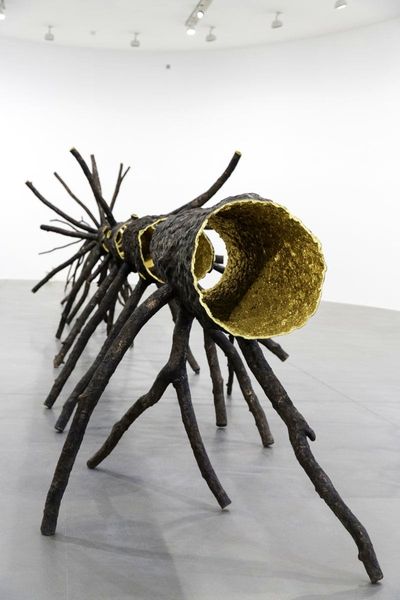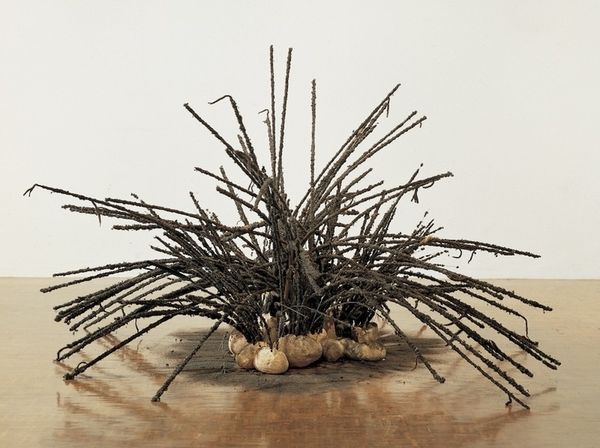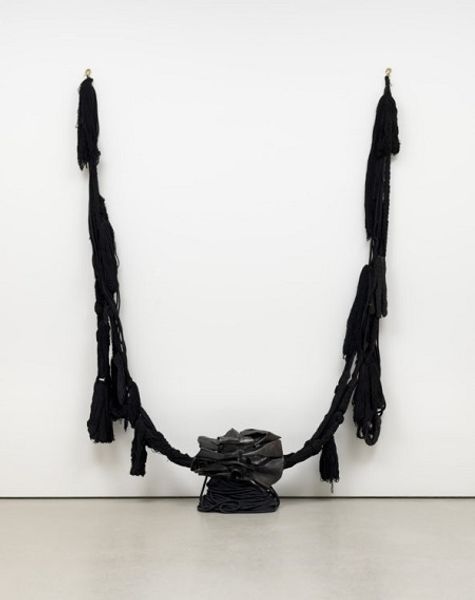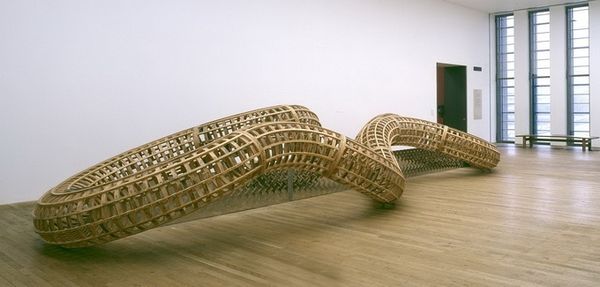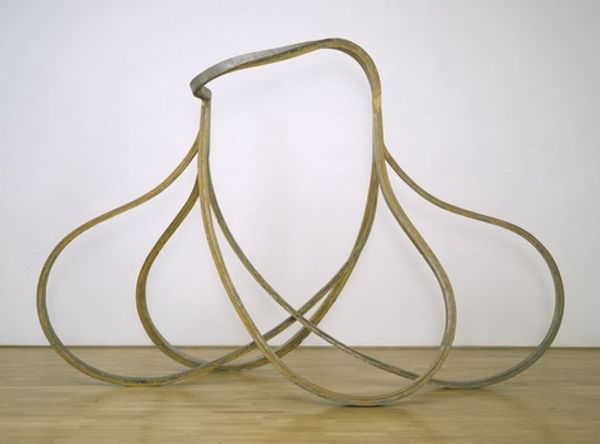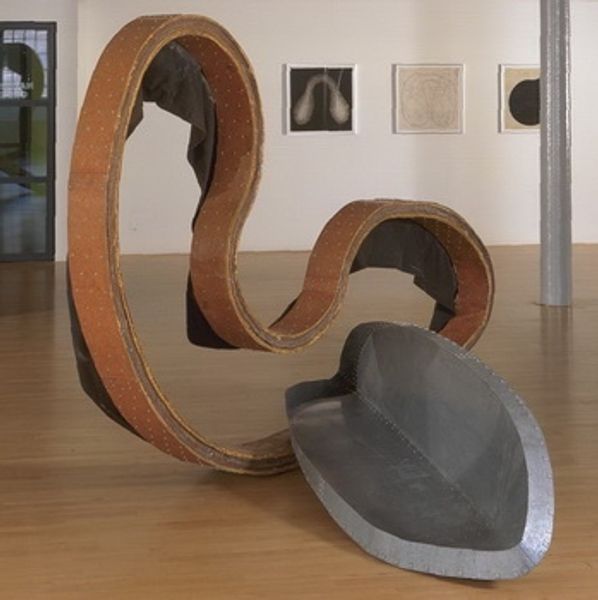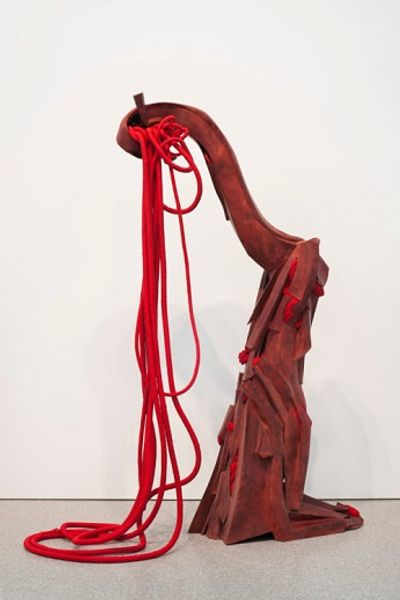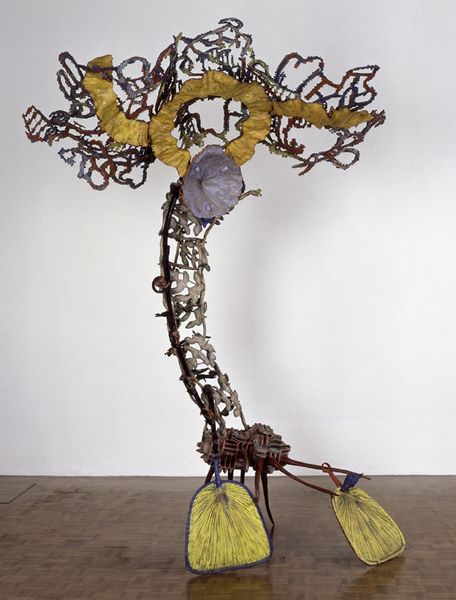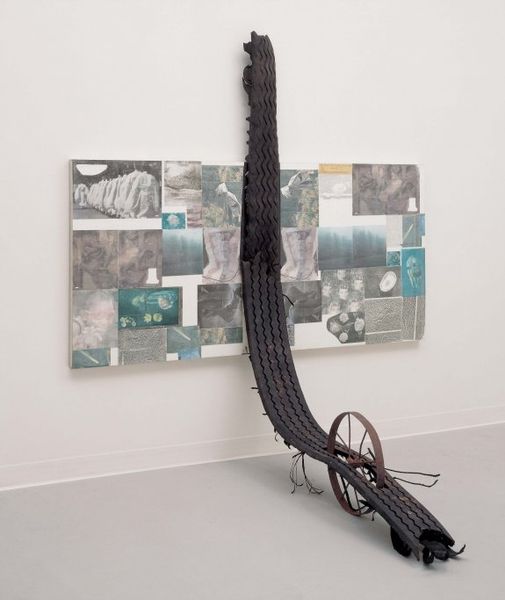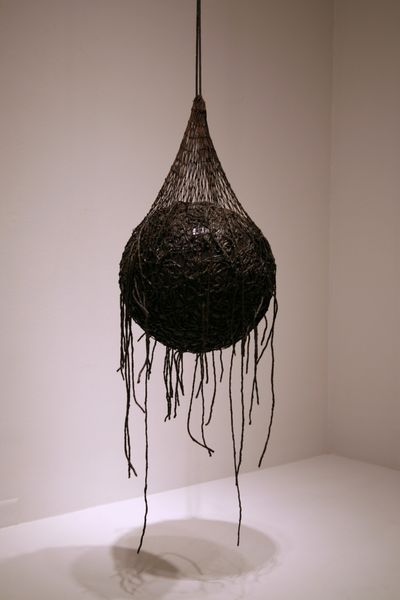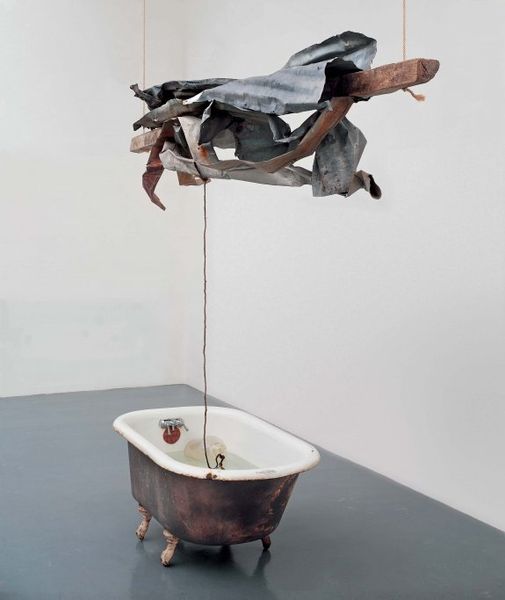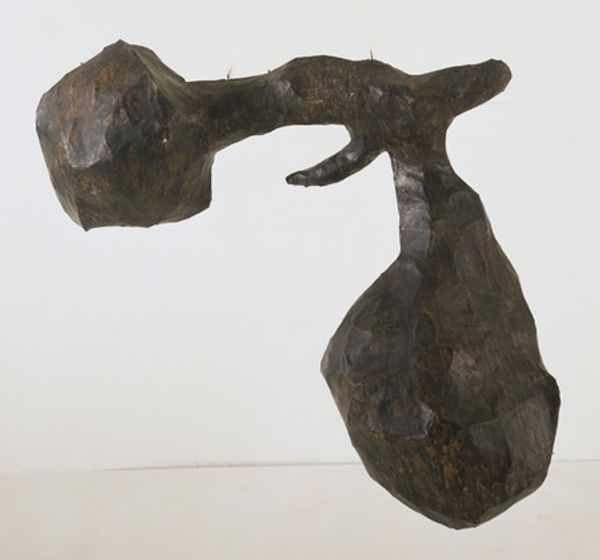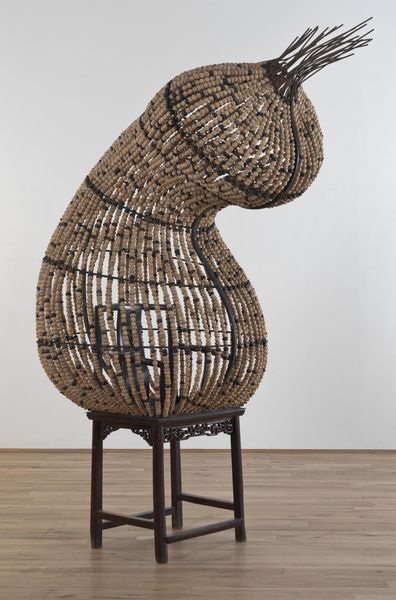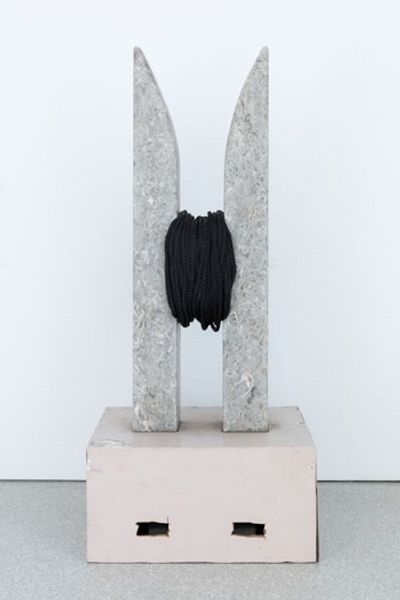
assemblage, bronze, sculpture
#
abstract-expressionism
#
organic
#
assemblage
#
stone
#
sculpture
#
bronze
#
sculpture
#
modernism
Copyright: Louise Bourgeois,Fair Use
Editor: This is "Avenza Revisited II" by Louise Bourgeois, created in 1969. It looks like an assemblage, mainly using bronze. It gives off a primal, almost unsettling feeling, with these organic forms. How do you interpret this work in relation to Bourgeois's broader artistic journey? Curator: I see this piece as deeply entwined with Bourgeois’s personal history and her exploration of female identity. Her childhood traumas, especially related to her father’s infidelity, reverberate throughout her work. "Avenza Revisited II" evokes the female body, but in an abstracted, fragmented way. Those bulbous forms at the top-- what do they suggest to you? Editor: They almost resemble a cluster of breasts or perhaps eggs, something inherently feminine and fertile. Is that intentional, connecting back to those personal experiences of hers? Curator: Precisely. Bourgeois challenges traditional representations of women. She presents us with forms that are both nurturing and unsettling. Consider the rough texture and dark bronze, contrasting with the rounded, sensual shapes. It resists easy categorization and speaks to the complexities and contradictions within female experience and also beyond that, to lived experiences. What narratives do you think it challenges? Editor: Perhaps the conventional, idealized portrayals of femininity. It's almost confrontational in its honesty, suggesting the darker, more complex aspects of being a woman. Curator: It certainly is. This work allows us to engage with themes of trauma, memory, and the body in a profoundly intimate and yet universally resonant way, pushing beyond simple representations to tap into something far more visceral. Editor: I appreciate the new perspective. It helps to see beyond just the organic shapes and into the deeply personal and societal meanings behind this sculpture. Curator: Indeed. By considering the contexts of gender, sexuality, and personal history, we gain a richer appreciation of the potent visual language Bourgeois employs.
Comments
No comments
Be the first to comment and join the conversation on the ultimate creative platform.
